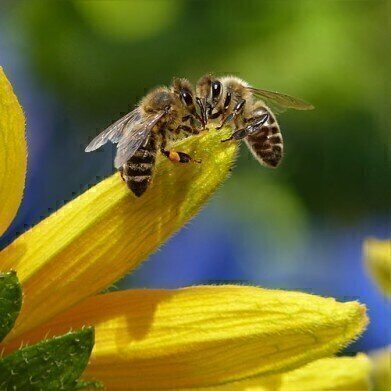Columns (LC)
Predicting How Viruses Affect Bees - Chromatography Explores
Apr 18 2021
Anybody who has seen the news or read a newspaper recently with the outbreak of Covid-19 due to the SARS-CoV-2 virus, will be well aware that viruses cause diseases. And it is not just in humans that viruses cause disease. Bees are crucial to the environment, economy, and the global food supply chain. And recently, global bee populations have been under pressure due to environmental changes, climate warming and disease caused by various viruses.
Scientists in Belgium and China have recently studied bees looking for a way to analyse the impact of viruses on bees. In a paper - The Bee Hemolymph Metabolome: A Window into the Impact of Viruses on Bumble Bees - published in the journal Viruses they report on how chromatography could be utilised to analyse potential biomarkers in the bee community.
Essential economic insects
Bees are essential of our economy and environment. We rely on them to pollinate our fruit and vegetables – bees provide us with so much more than just honey. Some estimates put the cost to pollinate the UK’s crops at £1.8 billion if the bees didn’t do the job for free. But bees are under threat from many sources including viruses.
The current methods of bee viral disease monitoring focuses on pathogen detection which can provide only limited information about a viral diagnosis. The detection of a viral pathogen is not evidence that the bee has a viral disease. There is also evidence that covert virus infections are more common that previously known. A covert infection can turn into an overt infection when the species is stressed, or its immune system is suppressed. So, bees could be carrying a killer that is just waiting for some tipping point so it can unleash its fury.
Chromatography spots the biomarkers
It is important to have techniques that can identify the tipping points and will allow researchers a better understanding of bee health. The researchers from China and Belgium turned to the science of “omics” which uses technologies that can describe an organism's condition by generating a massive amount of data that can be analysed. In this case the team were interested in finding biomarkers for several viral conditions that affect bees.
Using Bombus terrestris - buff-tailed bumblebee – as a model, the team used an untargeted metabolome approach to analyse bumblebees with one of two viruses. To analyse the hemolymph metabolites they used ultra-high performance liquid chromatography with mass spectrometry. The use of chromatography to analyse metabolites is discussed in the article, Advancing Effective Glycan Analysis.
The team report that the study has provided the first evidence of biomarkers for predicting a viral infection in bees. Twenty-nine metabolites were selected as potential biomarkers for viral infection. The study underlines the potential of metabolites biomarkers as a tool to describe the health of a community foraging in a specific community.
Digital Edition
Chromatography Today - Buyers' Guide 2022
October 2023
In This Edition Modern & Practical Applications - Accelerating ADC Development with Mass Spectrometry - Implementing High-Resolution Ion Mobility into Peptide Mapping Workflows Chromatogr...
View all digital editions
Events
ACS National Meeting - Fall 2024
Aug 18 2024 Denver, CO, USA
Sep 04 2024 Chiba, Tokyo, Japan
Sep 04 2024 University of Warwick, Coventry, UK
Sep 10 2024 Rockville, MD, USA
Plastics Recycling World Expo Europe
Sep 11 2024 Brussels, Belgium














